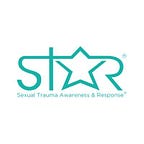10 Ways to Do Violence Prevention Work
Violence prevention work is a key component of what we do at STAR. Our mission is to support survivors of sexual trauma, improve systems response, and create social change to end sexual violence, with a vision to build a healthy community free from oppression and sexual trauma. Violence prevention work, especially primary prevention work, is one of the cornerstones of a society free from sexual violence.
Prevention work does not merely fall on the shoulders of those working directly in the field of social work, counseling, advocacy, social change, and so on. Prevention work can be brought into our day-to-day conversations such that we shift towards a consent culture and away from the current rape culture that harms us all. Prevention and social change work are closely intertwined, and both are everyone’s responsibility. You can read more about how to invest in social change work by reading our September Top 10.
Primary prevention work seeks to stop sexual violence from occurring. One way that STAR does prevention work is through middle and high school workshops teaching what healthy relationships look like and what are potential relationship red flags.
We’ve compiled a list of 10 ways that you can do prevention work starting today:
- Engage in your community and promote community connectedness. The NSVRC states, “By elevating community leadership and resilience, creating spaces for healing in prevention efforts, facilitating internal organizational change, addressing underlying factors that contribute to violence and safety, and partnering across fields and movements, communities are building collective power and challenging longstanding power inequities.” Prevention efforts cannot be best executed by an individual, but rather by the collective community as a whole. Finding ways to connect with your community and then build violence prevention efforts from there may be one of the best ways to create change.
- Educate yourself on bystander interventions and implement them when safe to do so.
It is our collective responsibility to prevent sexual violence. It may be easy to do so within our friend groups, maybe all of your friends are advocates against sexual violence. However, the instances when facing individuals with whom we aren’t familiar can be most challenging. NSVRC provides a detailed list of tips and strategies for bystander intervention practice. - Challenge harmful ideologies, such as victim blaming or that rape is human nature.
Harmful ideologies surrounding sexual assault misplace responsibility on the survivor, silence and shame victims of assault, and create a culture of acceptance and excuses for those who sexually assault others. By speaking up when you hear these ideologies come out, it is important to speak up as a step toward culture change. - Engage in conversations about healthy versus unhealthy relationships.
Dating violence is rampant. Preventing dating violence begins in the adolescent years, which is why it’s so important to engage in conversations about healthy relationship signs, as well as red flags to watch for. You can read more about healthy relationship signs in our February post. - Recognize that sexual harassment is sexual violence and shut down these behaviors.
Sexual violence is more than rape. Sexual violence exists along a continuum ranging from harassment to human trafficking, with each violent offense causing a range of impacts for survivors. Shutting down sexual harassment is prevention and could prevent escalations of sexually violent behaviors. - Understand consent culture and teach others that consent is more than “yes” or “no”.
Planned Parenthood uses the acronym F.R.I.E.S. to explain consent. This states that consent is Freely given, Reversible, Informed, Enthusiastic, and Specific. You can read more about consent on their website. Consent is not a mere lack of no. There are many reasons why a person may not give a verbal “no”, so, consent is the use of an enthusiastic yes. - Know that sexual violence is about power and control, not about the act of sex.
When a perpetrator assaults a person, it is in an effort to exert, gain or establish the power they have over that person. While they may feel sexual gratification from the assault, the act itself is not the primary motivator. - Treat your friends and partner(s) with respect and encourage others to do the same.
By modeling respect in our daily lives, we establish boundaries for how we expect to be treated and indicate to others how we will treat them. Showing respect to your family, friends, romantic partner(s), etc. sets an example for others. - Know and share community resources for sexual assault survivors.
A quick Google search for sexual assault resources in your area will yield many results. Organizations like STAR exist across the United States, as well as in other countries. We hope you’ll never need to walk through the experience of being sexually assaulted, whether yourself or with a friend/family member, however, it’s best to have a resource or two available just in case it’s needed. - Donate to organizations that serve survivors of sexual assault.
STAR is a nonprofit organization. We rely heavily on donors like you to continue the impactful and essential work that we do. We are not the only sexual assault center, nor are sexual assault centers the only assistance for survivors. Find a sexual assault organization that speaks to you and donate your time or money to help further their work.
If you would like to help STAR continue prevention work, as well as our other services for survivors, please consider donating $10 dollars to celebrate our 10th anniversary!
